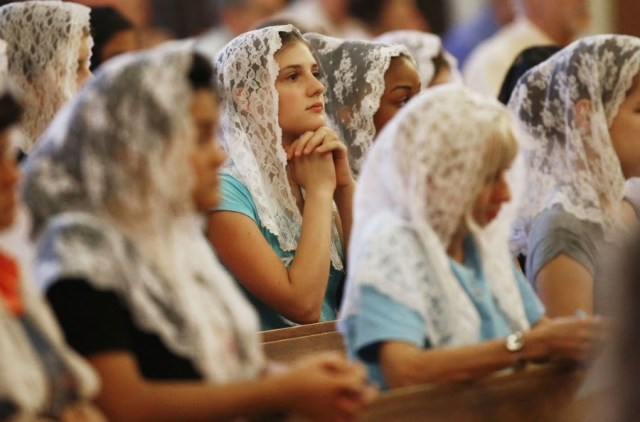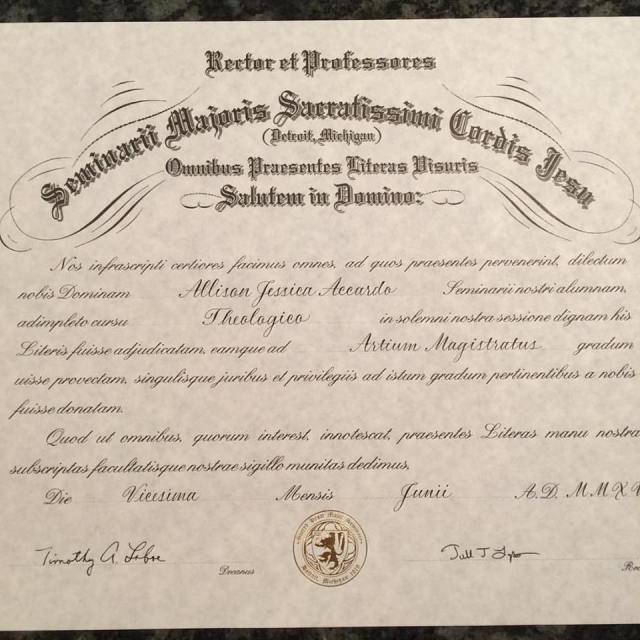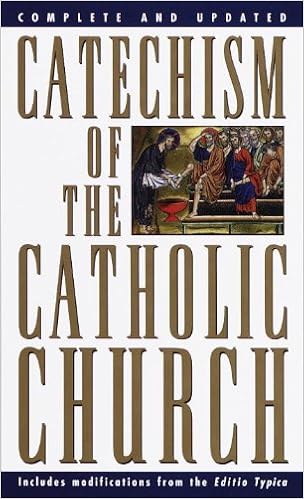A.M.D.G.
J.M.J.
A.T.C.
Laudetur Iesus Christus!
Nunc et in æternum! Amen.
I told you it might be a while before I posted again; teaching and what millennials call “adulting” can take up a great deal of time. Between lesson planning, grading, teaching, and other responsibilities there has scarcely been a lick of truly free time.
However, this is something that has been on my Liturgy nerd mind.
Oh, and did I mention that I am now an associate member of the Society for Catholic Liturgy? Thanks to two of my profs from the Seminary, one of who is on the Board, I was able to apply for membership and was accepted. I am pretty nerded out about that whole thing and I am looking forward to participating in the conference in November!
Oh, and I applied for one PhD in Theology program. I haven’t heard back but fiat voluntas Tua, Domine.
Going back …
There has been a topic that my mind has been contemplating for a little while and it’s something close to my heart and my own experience in the Church.
The role of language in the Liturgy both Latin and the vernacular.
I attend an Ordinary Form Mass that is prayed about 3/4 in Latin; the only parts that are not in Latin are the readings, the Creed (sadness), and the General Intercessions (the Universal Prayer). I love it because it forces me to focus on what is being prayed and it also helps me keep my mental translating skills sharp.
However, I don’t think one needs to be a language nerd like me to appreciate the value of the application of a universal language to the sacred rites of the Church.
Am I advocating for all Latin, all the time? Not necessarily.
Am I advocating for a wider utilization of Latin in the liturgical life of “common” Catholics?
Yes. Quite strongly.
Why?
Let’s look at it from a couple points of view:
Practically speaking, Latin is the mother tongue of the Roman Rite aka the Latin Rite. All of the Roman Church’s official documents are pretty much first promulgated in Latin and then later translated into the various languages of the world. That doesn’t exclude the liturgical texts of the Church including her Missal.
Common language guarantees a couple things practically:
- There’s a sense of solidity in having one official text with perhaps some other authorized translations. We’re not working with translations of translations. We’re dealing with direct translations from the editio typica (official source text). It’s why if one wants to do any scholarly work with Scripture but cannot work with the source texts in Greek and Hebrew, one would first use translations like the RSV-CE or the NABRE rather than the Douay-Rheims. The former texts are direct translations from the source texts while the latter is a translation of the Latin translation of the source texts. Please, trads, don’t anathemize me because I refuse to use the DRB for academic work. Personal prayer, maybe. But anything public or academic … no.
- The universality/catholicity of the Church is demonstrated in a real and observable way. That was one of the abundantly present perks before the emergence of entirely vernacular Liturgies: one could go anywhere in the world and attend Mass and it would be exactly the same. An English-speaking Catholic could go to a completely different country with a completely different language and attend Mass and it would be completely the same language. You would need a hand missal perhaps but you would have needed one either way.
I also believe there’s something more than just practicality and a means of manifesting the Church’s catholicity to the increased utilization of Latin in the offering of the Ordinary Form.
I think there’s a deeper theological significance to having Latin utilized more prolifically in the Liturgy.
- The use of an uncommon language indicates a special-ness, a sacred-ness, to the Liturgy. This is so special, so unique, so sacred to my life as a Catholic follower of Christ that we don’t just use our common language, we use a language that is reserved especially for such things as the Sacred Liturgy (and maybe even some Sacraments).
- This was part of the explanation for the promulgation of the revision of the English translation of the Roman Missal in 2011: going from a dynamic equivalence translation to a much more literal translation. Sure, it meant we were using more elevated language that most probably required some catechesis on its meaning but … since when is that a roadblock but for laziness?
I was once reading an article about the use of Latin in the Liturgy being like another practice that is regaining prevalence in parishes: the use of veils.
Even when I don’t mean it to, it always goes back to the veils.
But why?

Because I love this color!
Because things that are veiled in the Church are sacred, set aside for a holy purpose. Chalices are veiled. Tabernacles are veiled. Women can veil because of their sacred role in specially cooperating with God in the bringing of new life in the world.
Veiling isn’t a Catholic innovation. The Catholic practice of veiling sacred things is rooted in the Old Testament times when the things reserved for God were veiled such as the veils covering the holy of holies in the Temple. The demarcation created by the veil indicated that the space, the object veiled was not just any common place or object, it was something special and must be treated/approached in a particular way.
Look at our Orthodox brothers and sisters, they have beautiful icon screens called an iconostasis or “icon wall” that separates the nave (where the congregation is seated) and the sanctuary (where the Holy Sacrifice is offered). Latin Catholic churches have a similar (though not as dramatic) means of separating the nave from the sanctuary with a communion/altar rail.

An iconostasis in a Russian Orthodox Church in Chicago
These icon walls, these altar rails, the use of veils all points to a fundamental reality: what happens in these spaces is not mundane, not common, something that requires deliberate and reverent treatment for it to be properly appreciated.
And language can play a very important role in that maintenance of the sense of the sacred in the Liturgy because while these other things are tangible manifestations of “stop, this is something special, it requires special treatment,” language is an auditory demarcation of sacred-ness.
It’s like when mom gets out the nice china for Christmas dinner. You don’t always eat off the antique china and use the crystal to eat your supper. At least I don’t when I am making myself dinner.
Yes, Latin in the Liturgy is like using the good china (though the Church has her own literal g”ood china” called “sacred vessels” like chalices and patens).
When parts of the Liturgy, especially the Ordinary of the Mass are done in Latin, it is something that captures our attention. I am self-taught in Latin (always seeking to improve my skills). I pray in Latin on my own quite a bit. But every time I go to OF Mass in Latin, it still catches my attention: Stop. This is something special. Pay attention. This isn’t something one does every day.
It’s gotten to a point that I sometimes find attending Mass that is mostly in English to be jarring. I also find myself being more easily distracted but that’s a personal flaw I need to work on.
When we offer the most sacred “thing” we can offer to God in a special language that is not used anywhere else (have you ever heard someone carry on a conversation about The Crown in Latin?), it’s a figurative veil. It’s marking off this happening as something so special that we use a whole different language.
Now, again, am I saying that EVERYTHING should be in Latin? Heavens no. The language nerd in me would be tickled pink but that would be about it. Certain parts of the Mass should be done in the vernacular such as the readings, the homily, and the General Intercessions, no question. Though I think I would be geeked if one of my priest-friends decided to preach in Latin one day. #ANerdCanDream
But I think there’s a strong argument for the importance of keeping Latin in use in the liturgical life of the everyday Catholic. It shouldn’t be reserved for just the trads. It shouldn’t be reserved just for seminarians who have to learn Latin or for convents or monasteries. It’s a part of our Catholic culture. It’s HUGE part of the tradition that has been passed on to all of us through the generations of Catholics that have come before us.
Latin is the language in which the majority of our heavenly heroes, the saints, heard Mass being offered. It was what helped sustain them to live the life of heroic virtue that got them their heavenly reward.
Latin is the language that Satan hates and anything that ugly, damned creature hates is something I want to be in on like Christ, Mary, the Church, virtue, and … Latin. (I tell my students to not make their parents angry by making poor decisions but make Satan angry every day by living lives of virtue and holiness)
And don’t let anyone tell you that Vatican II did away with Latin altogether because that couldn’t be further from the truth. In the Constitution on the Sacred Liturgy Sacrosanctum Concilium #36 says:
Particular law remaining in force, the use of the Latin language is to be preserved in the Latin Rite.
I would say that that is pretty clear, wouldn’t you?
And the Council Fathers don’t just say that and move onto getting rid of altar rails (which they didn’t btw … #128 seems to be where it would be and it ain’t there).
Nope. Scroll a bit further down and you find #54 which states:
Nevertheless steps should be taken so that the faithful may also be able to say or to sing together in Latin those parts of the Ordinary of the Mass which pertain to them.
and pertaining to the incorporation of the vernacular:
In Masses which are celebrated with the people, a suitable place may be allotted to their mother tongue. This is to apply in the first place to the readings and “the common prayer,”
“Common prayer” being the Prayers of the Faithful/General Intercessions/Universal Prayer (see #53).
Priests: consider incorporating more Latin into the liturgical life of your parish. It doesn’t need to be 0 to 60 in one weekend. Start with the Ordinary: the Gloria, the Sanctus, the Agnus Dei. Introduce it gradually. Explain to the faithful why it’s important that we hold onto this very vital part of our tradition. I find that if you explain things to people without being patronizing, it tends to go over better.
Everyone: consider incorporating more Latin. Learn at least one common prayer in Latin like the Ave Maria (Hail Mary), the Pater Noster (Our Father), or the Gloria Patri (Glory Be). Learning these basic prayers can be a good starting point and they can also help you to focus on what you’re praying instead of just rattling off the words because we just know them from rote recitation. I know it’s helped me.
Just as a side note, I think the issue of the loss of Latin in our liturgical life is a particular problem with the developed world and I think it could also be exasperated by the American desire for assimilation. Assimilation is a good thing to a point. However, there can be some drawbacks.
I am sad that while I am aware and do practice some customs of my various ethnicities, the languages of my ancestors has been all but lost. I have been trying to teach myself Italian for years (mostly a time and self-discipline issue) and Polish is on my “to learn” list but I think that’s a big problem with Americans especially as generations pass from when the first generation came over to the country (mine, at least the Italians, came over in the early 20th century).
Let’s not let that happen to our Catholic identity because it’s happening and it’s happening quickly and you don’t need to look far to see it (that’s for a whole other blog post). I think reclaiming our heritage as Latin Rite Catholics through the increased utilization of Latin in our liturgical life once again is a good step in restoring a real appreciation of our unique heritage and identity as Latin Catholics. Also, I think it will also serve as a means of restoring/reinforcing a sense of the sacred to the Liturgy.
Well, I think that’s long enough for now. I hope it wasn’t too much of a stream of consciousness and more systematic.
God bless y’all and Mary keep you all always! 🙂






















You must be logged in to post a comment.